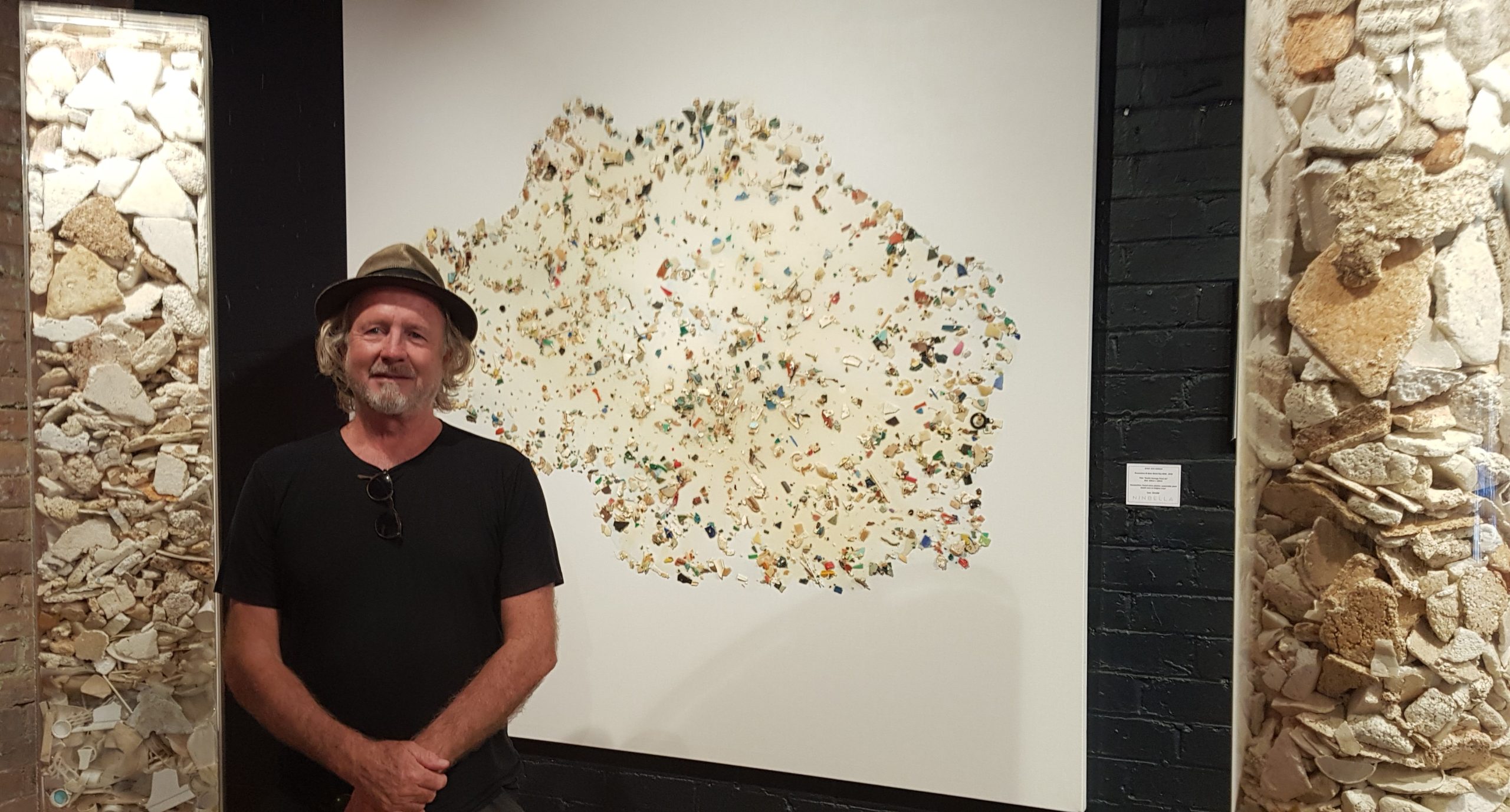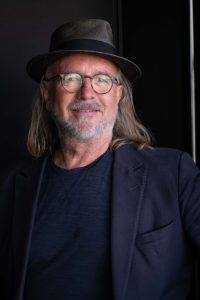
For the past month and into April, Ninbella gallery on Bangalow’s main street has displayed works by Byron Shire environmental artist, John Dahlsen. Here, John talks with Christobel Munson about how he strayed into creating art from what others may regard as flotsam and jetsam.

John Dahlsen and his wife Rago live on “a couple of acres” on Skinners Shoot. When they moved into their house 26 years ago, John decided he’d like to make some furniture for it out of driftwood. So, he combed the beaches at Mallacoota where his family had a place, looking for “beautiful driftwood” for that purpose, amassing nearly enough to fill a furniture removal truck.
But as it happened, he also became fascinated with the countless pieces of plastics he found on the beach, usually referred to as ‘ocean debris’, so collected 60 big garbage bags full of washed up plastics, too. “I was immediately affected by a whole new palette of colour and shape revealing itself to me. I had never seen such hues and forms before. It turned into an accidental journey into environmental art. I could just see the world needs to see this.”
Back home, he tipped all the plastics onto the studio floor and started sifting, sorting and colour-coding. Seeing the piles of debris, his friends were very concerned, even asking ‘Are you OK, John?’ But, although he had already been a successful painter for 17 years, his primary focus irrevocably changed direction from that point.
Now, these assorted items end up as sculptures and installations.While society labels these things as ugly, trash, and useless – John’s eye perceives something else. “I’m fascinated by the way they have been modified and weathered by the ocean and nature’s elements. My challenge as an artist is to take these found objects and to work with them until they tell their story.”
The diverse range of materials he uses includes hessians, ropes, all kinds of coloured plastics, mattress foam, Styrofoam, driftwood, Coke and water bottles, ropes, flippers, balls, thongs. Nothing is barred. From the massive trunk and rootball of a camphor laurel, it took from 2008 to 2010 for him to create an award-winning sculpture, displayed for some time on the Byron Bay beachfront before arriving at its final destination at Byron Eco Park in Tyagarah. He’s created totem poles out of thongs. “’Totem’ means ‘symbol of a clan’. So to me, the thongs are a symbol of our contemporary situation, with its rampant waste. I wanted to express a positive response of renewal.”
That theme became the basis of his PhD from Darwin’s Charles Darwin University in 2016, titled Environmental art: activism, aesthetics and transformation. It is described as a ‘response by the artist to the aesthetics of beauty, the role of art as an activist platform and transformation of both a personal nature and of objects in the creative process,’ eventually to be turned into a book.
“The core concern of my art practice is to create something that has its roots in aesthetics, as well as making an activist statement,” he explains. “It’s easy to make blunt statements, but that’s not really art. It doesn’t take people on an investigation, to grow and be inspired. Hopefully my work has more of an effect; inspiring people through art is something I’m committed to.”
When the global financial crisis hit, galleries around the world stopped buying art, and it “really hit many artists”. As luck would have it, John has Gemini rising (yes, I’m a true believer!) so as well as making art, he started writing, too. “I decided to do whatever it takes.” As well as lecturing at universities, this led to writing five books including An Artist’s Guide to a Successful Career, Art Insights and Tide Line.
Meanwhile, interest in his work has spread globally. As well as having his works exhibited in a number of private collections, he’s exhibited in such countries as Indonesia, Israel, the Netherlands, India, Italy, in many US cities, Greece and China, as well as holding shows in countless Australian cities. The list of dozens of prizes and awards he’s achieved since 1976 – from the Wynne prize at the Art Gallery of NSW, to a Churchill Fellowship, to being a finalist in the Sulman Award – is quite overwhelming for this quietly spoken man. He also lectures (which he “enjoys immensely”) at universities, high schools, environmental symposiums and has acted as cultural ambassador.
And, in case you were curious – yes, he also recycles at home. “There’s nothing we don’t recycle!”